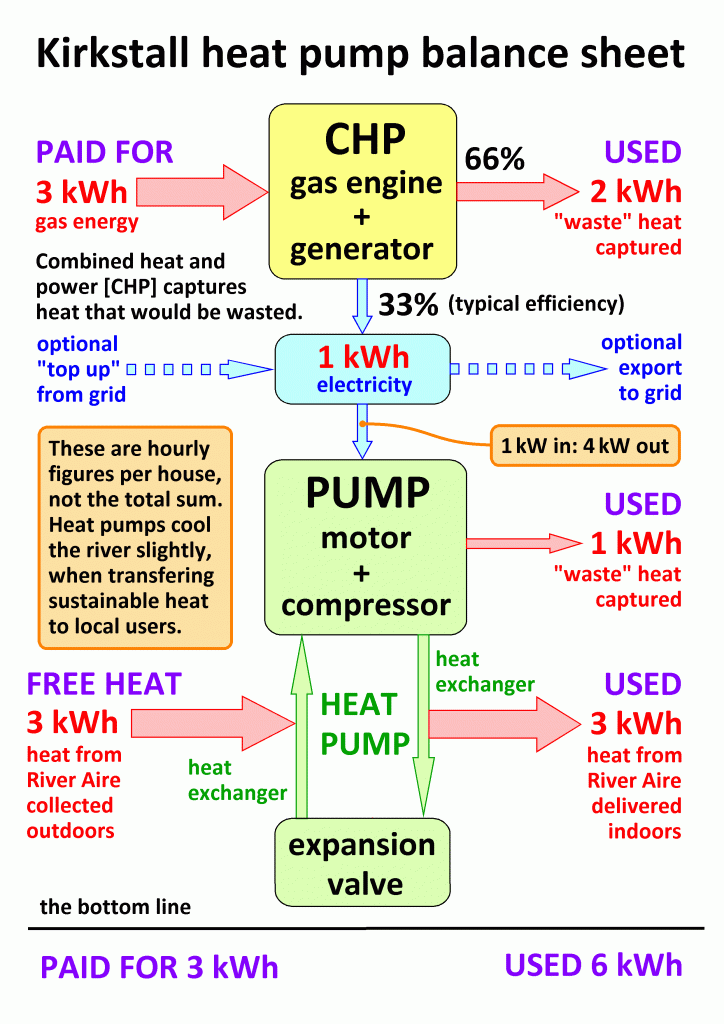In 2014 the Department for Energy and Climate Change (DECC) identified the River Aire through Leeds as a prime site for water-source heat pumps. When used in combination with combined heat and power (CHP) generators, water-source heat pumps have the potential to cut fossil fuel consumption for room heating and hot water by 50% with corresponding reductions in CO2 emissions and fuel bills.

Heat pumps are widely used in ‘fridges, air conditioners and tumble driers. They have been used for domestic heating for seventy years. Heat pumps are much more efficient than conventional boilers, because the heat is merely moved from one location to another, rather than created from scratch. A typical Coefficient of Performance (COP) would be 4, meaning that the pump delivers four times more heat than the electricity it consumes. Heat pumps slightly cool their source (in this case the River Aire) but warm the homes along the river valley.
The relatively high price of mains electricty dictates the use of natural gas as the prime source of energy. However, all the waste heat produced by the CHP generator and the heat pump motors can be captured and added to the heat extracted from the river water. The net effect is to double overall heating efficiencies when compared with conventional condensing boilers.
Such systems offer immediate benefits to families trapped in fuel poverty in high-rise flats. The gas is used to generate electricity outside the high-rise building, so there is negligible risk to the building occupants. It is also possible to supply some of the locally generated electricity to local consumers, either directly, or via the national grid, an arrangment commonly known as “sleeving”.
The cost per house of CHP generators and heat pumps is broadly comparable with conventional boilers. Unfortunately the same cannot be said of the heat distribution network. The cost of excavating streets (which may be full of existing services) is by far the most expensive part of the installation. Leeds City Council has found this to be a major problem with their energy from waste incinerator scheme.
Nevertheless, there are some good reasons to be hopeful:
- Kirkstall is less crowded than Burmantofts, so there is more room for new pipes.
- Water temperatures are lower with a heat pump scheme, reducing the need for insulation.
- It may be possible to renew all underground services at the same time.
- It may be possible to supply terraced blocks as part of an enveloping scheme.
- New technology may insert complex pipe runs from a single hole in the street.
